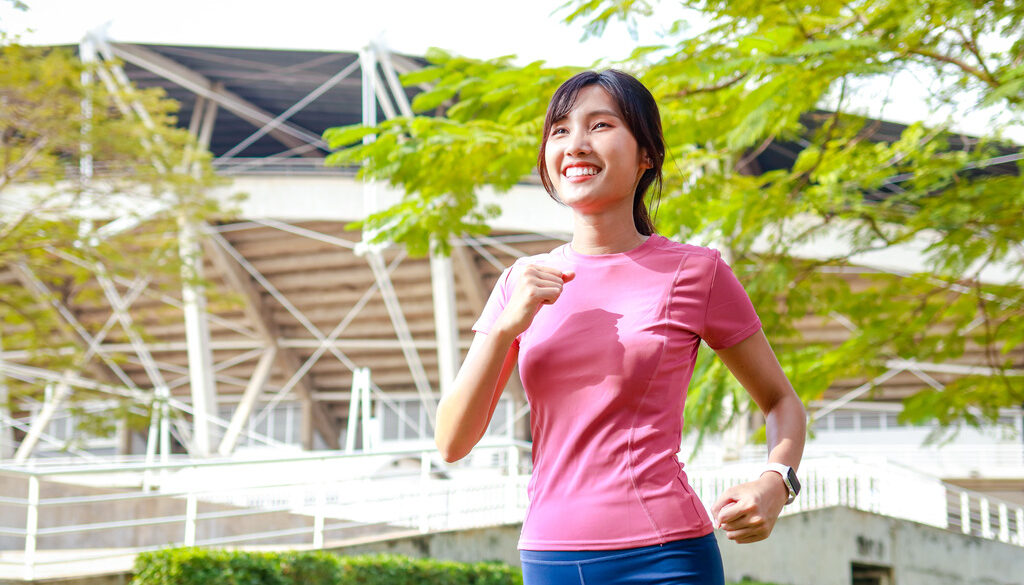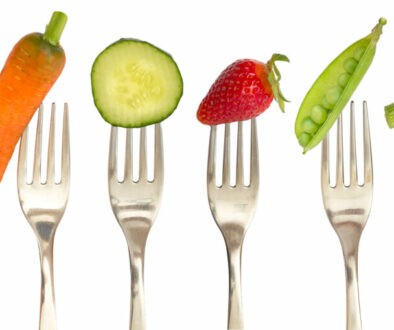10 Tips for a Safe Summer Workout Plan in North Carolina
Summer is a great time to get outdoors and enjoy all that nature has to offer. From swimming in the ocean to running, the weather can add variety to your summer workout plan.
But summer also presents challenges. To avoid conditions like heat exhaustion, your summer workout plans for Raleigh, NC aren’t complete without these 10 safety tips.
10 Tips for a Safer Summer Workout Plan in Raleigh, NC
1. Center Your Workout Around the Weather Forecast
It’s so important to take the North Carolina heat index into consideration when you’re planning your summer workout plan. The heat index measures what the temperature actually “feels” like when you add humidity.
We encourage you to look at the weekly forecast and plan your routine around the weather. You may also consider exercising in the early morning or in the evening, when it’s cooler.
2. Consider Water Workouts
Lap swimming is an effective form of exercise that provides great cardio. It also reduces the stress on your joints. This means it’s the perfect complement to your planned summer workouts. Swimming is also ideal for those who have arthritis or joint problems.
3. Take It Slow
If you’re not used to exercising in the outdoor heat in Raleigh, NC, take it easy. Don’t overexert yourself. You may find that the heat leaves you more exhausted and dehydrated. For many, one to two weeks is long enough to adapt to the summer heat. Once your body adapts, you can increase the time and intensity of your workouts.
4. New To Exercise? Talk to Us First
If you’re new to fitness or you’re just establishing an exercise routine, we’d like to speak with you. If you’re planning on getting started in the summer heat, you won’t know your body’s heat tolerance. We can work with you to establish a summer workout plan that is appropriate to your fitness level. We’re excited to take this journey with you toward better health!
5. Stay Hydrated
We can’t emphasize this enough! Dehydration can easily lead to heat-related illnesses. Drink water—but don’t wait until you are thirsty to drink fluids. Sports drinks are best saved for those times when you plan to intensify your workout.
Avoid alcohol and drinks loaded with sugar. These can actually make the situation worse!
6. Take Frequent Breaks
Frequent breaks give you a chance to hydrate yourself and allow your body a chance to cool off. Don’t wait until you’re on the brink of exhaustion before taking a break. We suggest you take breaks at regular intervals, regardless of whether or not you feel like you “need” them.
7. Wear Appropriate Clothes
Remember that dark colors absorb heat and are not good choices for your summer workout plan. We suggest loose-fitting clothes. These will help your sweat evaporate. It’s also a good idea to wear a wide-brimmed hat or something similar that will provide additional protection.
8. Sunscreen is a Must
Prolonged sun exposure can place you at higher risk of developing skin cancer. Sunburns can also become painful and hinder your ability to stay cool. Be sure to use sunscreen that blocks both UVA and UVB light. If you prefer to avoid chemical sunscreens, there are other alternatives, such as zinc oxide.
9. When in Doubt, Stay Inside
When it comes to summer workouts, it’s always best to err on the side of caution. If you have any concerns about the North Carolina heat, that’s a good cue to stay inside. During these times, you can take advantage of your gym membership, your treadmill and even exercise videos.
10. Know the Warning Signs of Heat-Related Illnesses
If you experience symptoms of a heat-related illness, it’s important to know what steps to take.
We’ll go into these in detail below.
The 4 Most Common Heat-Related Illnesses and Their Symptoms
The most common heat-related illnesses are:
1. Heat rash
Sometimes called “prickly heat,” this is a red, stinging skin irritation. Small blisters, bumps and itching are signs of heat rash. You may also experience a “prickling” feeling. If the rash is mild, it should go away once your body cools down.
2. Heat cramps
As the name indicates, muscle cramps are the primary symptom of this illness. Other signs include fatigue, thirst and heavy sweating. Typically, heat cramps can be alleviated by drinking sports drinks with electrolytes and moving to a cooler place.
3. Heat exhaustion
If you don’t drink enough fluids and you are outside for a long time, you could develop heat exhaustion. Symptoms include:
- Fainting or dizziness
- Extensive sweating
- A pulse that is weak and rapid
- Low blood pressure
- Muscle cramps
- Fatigue
- Headache
- Nausea
To treat mild cases of heat exhaustion, rest in a cool place—preferably an air-conditioned building. Elevate your legs higher than your heart. Drink water or sports drinks and take a cool shower or bath. If a shower or bath is not available, use towels soaked in cold water to cool your skin.
4. Heatstroke
This is a serious, life-threatening condition that occurs when your body temperature rises rapidly to 104 degrees Fahrenheit or even higher. If left untreated, it can cause extensive damage to your internal organs.
The signs of heatstroke include:
- Confusion
- Slurred speech
- Nausea
- Vomiting
- Headaches
- Rapid breathing
- Rapid heart rate
If you or someone you are with shows the following signs of heat stroke, get emergency medical treatment immediately.
Raleigh Medical Group Is Here to Help You Life a Healthier Life
Exercise dramatically reduces your risk for diseases such as diabetes and high blood pressure. If you’re wondering how to get the most out of your exercise routine—or if you’re ready to start one—speak with us. We have the information you need.
We also have local sports medicine specialists in Raleigh, NC who help treat and prevent sports injuries.
Schedule an appointment with one of our internal medicine physicians in Raleigh today.




